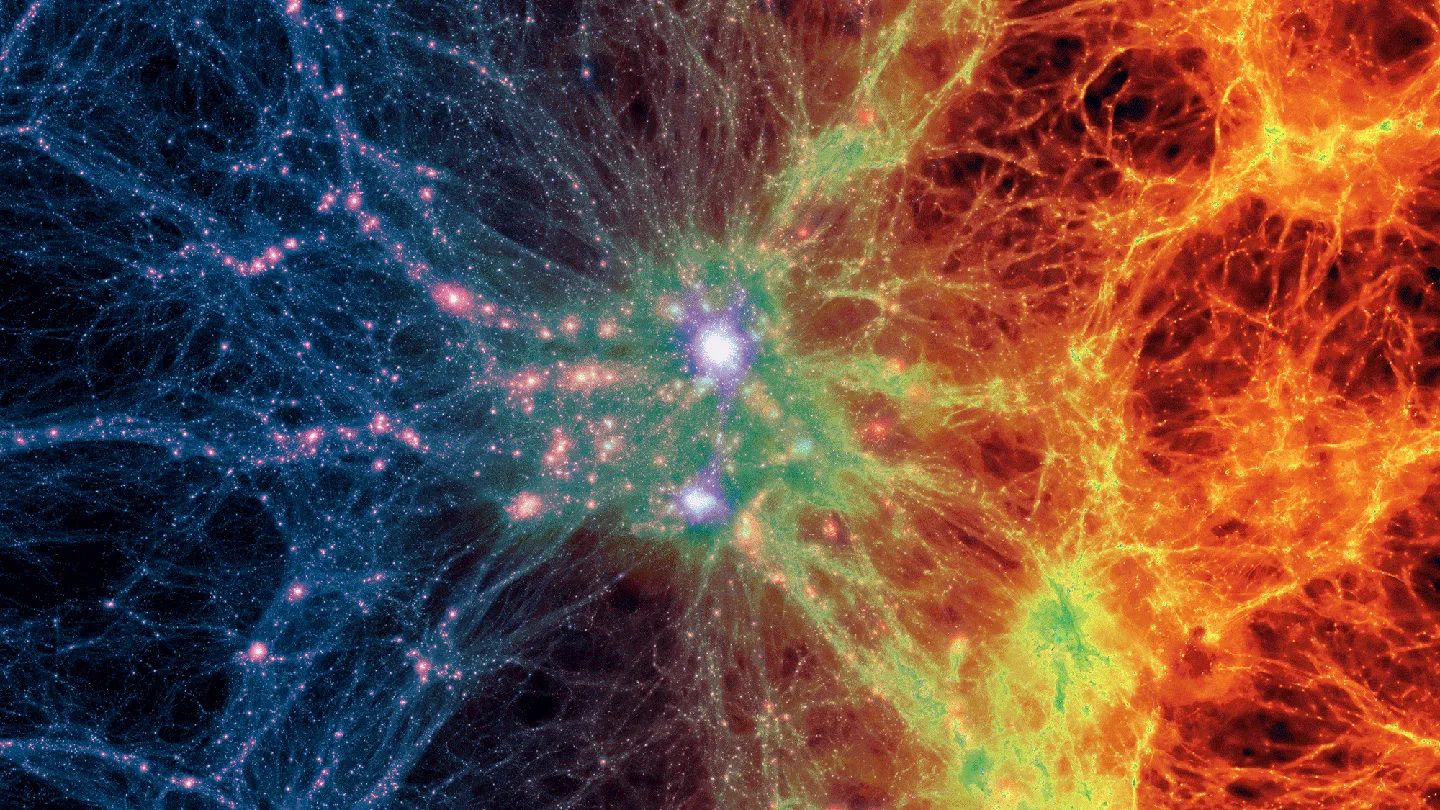Astronomers Find Missing Ordinary Matter in Intergalactic Space
Scientists have located long-missing normal matter, hidden in faint filaments between galaxies.
For decades, astronomers were confronted with a cosmic puzzle: about 40–50% of the universe’s ordinary matter — the stuff that makes up stars, planets, and people — was missing. This wasn’t dark matter or dark energy, but 'baryonic matter' , the protons and neutrons that form the building blocks of all visible structures. Now, using powerful X-ray observations and improved cosmological models, scientists have finally found where that missing matter has been hiding — not in galaxies or stars, but in faint, hot filaments of gas threading the vast distances between galaxies.
> “It’s like discovering the invisible scaffolding of the universe,” said Dr. Hideki Tanimura, lead researcher from the Institut d’Astrophysique Spatiale in France. “These filaments were theorized for years, but only now can we see them clearly.
” The Great Cosmic InventoryAccording to the Big Bang model, about 5% of the universe is made up of ordinary (baryonic) matter. But when astronomers tried to tally that matter — even with the help of powerful telescopes — nearly half of it was missing from observational data. That sparked decades of research into what came to be known as the 'missing baryon problem'.
The BreakthroughThe new study combined data from ESA’s Planck satellite and eROSITA X-ray telescope , focusing on the faint glow between pairs of galaxies. By analyzing how X-rays scattered across vast stretches of space, the team was able to detect the Warm-Hot Intergalactic Medium (WHIM) — diffuse gas at temperatures between 100,000 to 10 million Kelvin. This gas, spread in filaments stretching millions of light-years , connects galaxies like strands in a cosmic web.
Though nearly invisible, the WHIM contains the long-sought missing baryons. > “We weren’t looking in the wrong place — we just didn’t have the tools to see something so diffuse and hot,” said Dr. Elena Pierpaoli, a cosmologist not affiliated with the study.
What Is the WHIM?The Warm-Hot Intergalactic Medium is made of ionized gas that lies in the spaces between galaxies. It doesn’t emit much light on its own, but it can scatter background radiation — a signal that is only now being detected with high-resolution X-ray instruments. The WHIM plays a crucial role in cosmic structure formation, acting as the reservoir from which galaxies can draw matter and form stars.
Why This Matters1. Cosmological models now match observations : Finding the WHIM validates predictions from simulations like Illustris and Millennium. 2.
Unlocks clues to galaxy evolution : Understanding where baryons are located helps explain how galaxies grow and evolve. 3. Provides insight into the cosmic web : The detection helps map the universe’s large-scale structure — an interlinked network of matter shaped by gravity.
How They Found ItResearchers stacked and analyzed signals from hundreds of thousands of galaxy pairs , averaging out faint emissions to reveal patterns hidden in noise. This technique — known as statistical stacking — allowed them to amplify the weak X-ray signatures from the WHIM. In doing so, they provided the most detailed observational evidence yet for the existence and density of these cosmic filaments.
What's Next?The discovery sets the stage for future missions like: - Athena (Advanced Telescope for High ENergy Astrophysics) — ESA’s flagship X-ray observatory planned for the 2030s - Lynx — NASA’s proposed next-gen X-ray telescope - Spectroscopic studies of intergalactic hydrogen to confirm the composition of these filamentsTogether, these tools will allow scientists to study the thermodynamics and chemical makeup of the WHIM in detail, and even trace the recycling of matter in and out of galaxies. Conclusion: Filling in the Cosmic GapsThis discovery doesn’t just close a major chapter in astrophysics — it rewrites it. The elusive baryons that have hidden from astronomers for decades were always there, suspended in the intergalactic void, holding the cosmic web together.
Now, with the right instruments and methods, humanity can begin to trace the full architecture of the universe — not just the galaxies we see, but the invisible threads that bind them.
9th July 2025



